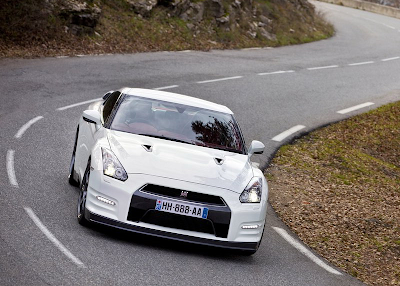Nissan Car Engine Performance, Model with an initial run vehicles, an output unheard of at that time ever since the correlation of design with production efficiency has influenced the trend of modern vehicle construction and made possible the use of automobiles by Americans in all income groups.
saw the beginning of a period of gradual change and refinement in automobile design. By that time it was clear that the sparkignition gasoline engine was to be the power plant of the modern motor vehicle. Nissan Car Engine Performance Nissan Car Engine Performance Steam and electrical rivals were clearly on their way out. the sliding gear transmission had established itself as predominant. Water-cooled engines were almost universal. the poppet valve was used in almost every engine desing Engines were all located in the front. of the chassis. Since the early twenties, major improvements have been made in every car feature, but basic changes have occurred in only a few instances.
The major idea in the designer's mind has been to produce a vehicle which will function at all times under all conditions and which will be increasingly comfortable to ride in and easy to operate. The life of tires has been screamed many times independent front-wheel suspension has entirely replaced the rigid front axle on American cars, four-wheel brakes are universal and all of them are hydraulic; engine-compression ratios have gone steadily upward, producing more power in an engine of given size, availability of new materials and new types of old materials have influenced the design of scores of individual vehicle parts-hundreds of other changes have been made.
Through all of the changes in recent years, however, runs the theme of evolution rather than revolution, refinement rather than reconstruction the early cars consisted of a chassis in which an engine to furnish power for movement was incorporated A place for the driver was provided as a necessary afterthought. Sometimes he had little more than a box to sit on. Nissan Car Engine Performance Early improvements designed to make riding not merely possible, but pleasant as well, followed carriage-building patterns Chassis were dsigned Then designers schooled in the carriage-building tradition made bodies which were fitted to the chassis as best they might be. Gradually conditions changed Chassis and engine reliability came to be normal expectancy aids.
in passenger cars, car owners demanded greater id ing comfort In recent years, the old order has changed considerably, in passenger-car design it has almost been reversed Passenger-car chassis construction has been forced to shape itself to predesigned bodies in more than a few while even in the field of truck design body-chassis problems now get slmultaneous consideration to a greater extent than ever Already several designs eliminating the, conventional frame and using the body itself as a stressed unit stand as a symbol of the general idea of the modem motor vehicle as an integrated unit Nissan Car Engine erformance Out of this slowly shifting emphasis has grown the modern idea of the whole motor vehicle as a single. unit in which simultaneous or closely coordi



